Floating seals, also known as mechanical face seals, heavy-duty seals, or Duo Cone seals, are integral components in industrial machinery, especially in environments where extreme conditions are common. These seals are designed to prevent fluid leakage, protect internal components, and ensure smooth operations in rotating or reciprocating machinery. With their ability to withstand severe wear and protect against the ingress of abrasive materials, floating seals play a vital role in prolonging the life of machinery in harsh working environments.
A floating seal is a high-performance sealing device that typically consists of two metal sealing rings and an elastomer element, which together prevent leakage in rotating applications. They are engineered to be used in machinery that operates under demanding conditions, including construction vehicles, mining machinery, industrial pumps, and gearboxes. These seals are also referred to by other names, including mechanical face seals, heavy-duty seals, or Duo Cone seals. Their primary function is to maintain a barrier that prevents contaminants (such as dirt, water, and dust) from entering the system while retaining critical lubricants and oils inside the machine.
Floating seals are most commonly used in environments where traditional seals may fail due to high pressures, abrasives, and high rotational speeds. Their versatility and robust design make them indispensable in applications where the prevention of leakage is crucial.
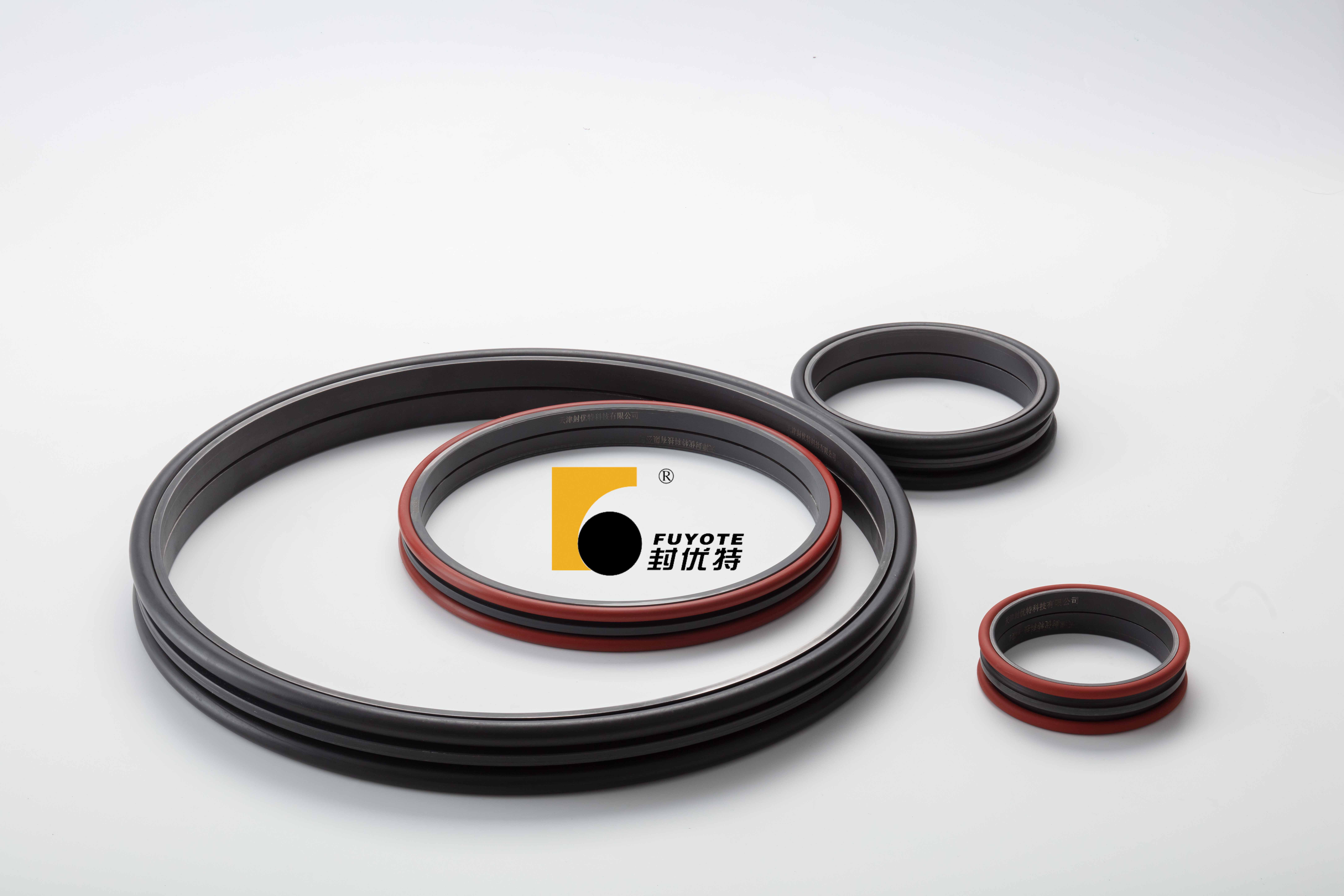
Floating seals are typically made up of two identical metal rings that face each other, with an elastomer component providing axial compression. The elastomer seals, often O-rings, create an effective seal by pressing the two metal rings against each other, forming a barrier. The floating nature of the seal refers to the slight movement of the seal components, which allows for minor misalignments of the housing or shaft, ensuring that the seal remains tight even in dynamic applications.
Metal Rings: These provide the structural strength needed to withstand high pressures and rotational forces.
Elastomer Elements: Usually O-rings, these components allow for axial compression and maintain contact between the sealing surfaces, providing the necessary flexibility.
Sealing Surfaces: The two metal rings are mounted in such a way that they rotate against each other, creating a dynamic sealing surface. This motion helps prevent leakage by ensuring that the contact area remains tightly sealed even under stress.
The sealing principle involves compression and friction. The O-ring or elastomer element deforms under axial pressure, pushing the metal rings together, creating a strong seal that resists the internal fluid's pressure. Over time, as the seal wears, the O-ring's stored elastic energy compensates for this wear, ensuring that the seal maintains its integrity for extended periods.
Duo Cone Seal (with O-ring): This type of floating seal can also be called O-ring type mechanical face seal. In this version, an O-ring serves as the secondary sealing element. It is ideal for applications where lower temperatures and moderate pressures are involved.
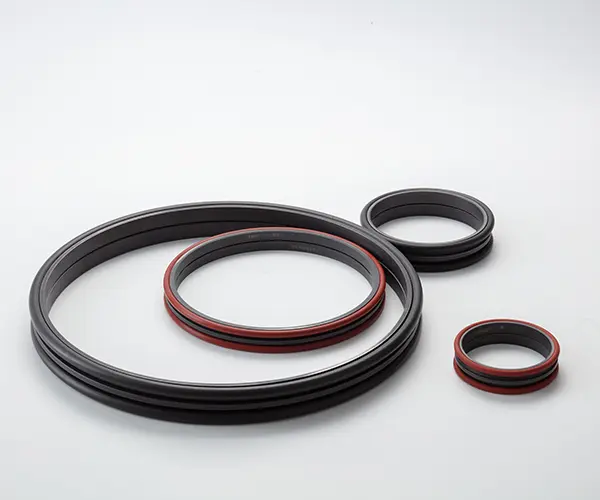
DF Heavy Duty Seal (with Diamond-Cross-Section Elastomer): It is also as known as square bore face type seal. Instead of an O-ring, the DF heavy-duty floating seal consists of two rectangular rubber rings and a metal ring, with an L-shaped contact surface between the metal and rubber rings. During operation, the torque generated by the rubber rings helps stabilize the floating seal within the seat cavity, ensuring smooth and reliable performance.
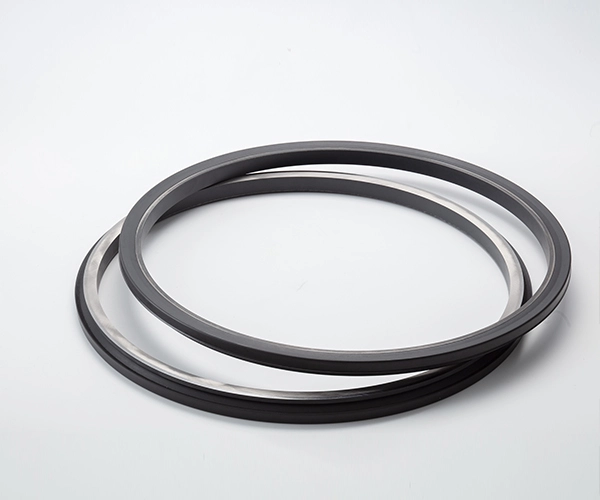
Both types function in the same basic way, with metal sealing rings mounted face-to-face and an elastomer element helping to center the rings and provide compression.
Floating seals are primarily used in industries where equipment is exposed to heavy-duty environments and needs to maintain sealing integrity despite vibration, axial misalignment, or fluctuating pressures. Some common applications include:
Construction Machinery: Floating seals are widely used in tracked vehicles like excavators, bulldozers, and conveyor systems. These machines operate in harsh environments, where seals are essential to prevent contamination and ensure longevity.
Agricultural and Mining Equipment: Machinery such as harvesters, loaders, and mining vehicles rely on floating seals to keep dust, dirt, and water from damaging critical internal components.
Gearboxes and Axles: Floating seals are used in applications involving gears and rotating shafts, where preventing oil leakage is crucial.
Industrial Pumps and Compressors: In fluid handling systems, these seals prevent the loss of lubricants and the ingress of contaminants, ensuring efficient and safe operation.
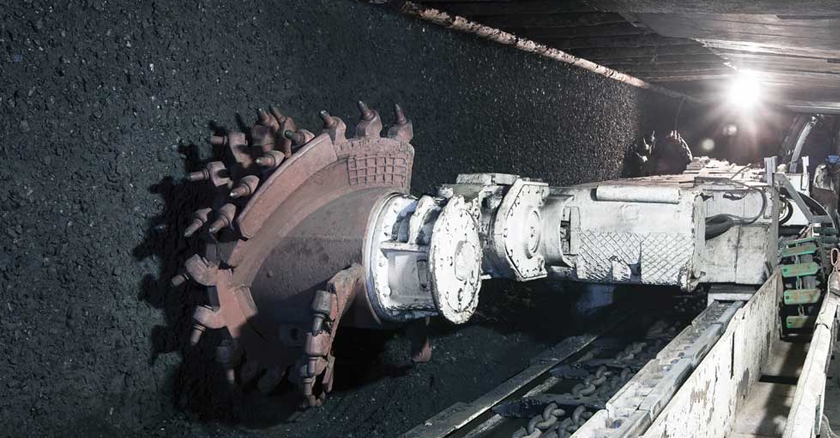
Proper installation and regular maintenance of floating seals are critical to ensuring their long-lasting performance. Below are some key installation tips and maintenance considerations:
Surface Preparation: Before installing the floating seal, ensure that the contact surfaces are smooth and free of debris. Rough surfaces or scratches can damage the seal and impair its ability to form a proper seal.
Correct Orientation: Ensure the seal is installed in the correct orientation. The lip should face inward to the oil or fluid, with the outer surface facing outward to prevent external contaminants from entering the system.
Use of Proper Tools: To avoid damaging the seal during installation, use specialized tools designed for floating seals. Improper installation can lead to seal distortion or breakage.
Cleaning: Regularly clean the surrounding areas of the floating seal using a high-pressure cleaner. Accumulated dirt and debris can wear out the seal or cause it to shift, compromising its sealing ability.
Monitoring Leakage: If you notice an increase in leakage or if gear oil starts to leak around the seal, it may indicate seal failure. Promptly replacing the seal is necessary to prevent further damage to the equipment.
Proactive Replacement: Floating seals have a limited service life, and it's important to replace them before they fail to avoid extensive damage to the equipment. Keep an eye on the hours of operation and replace seals as recommended by the manufacturer.
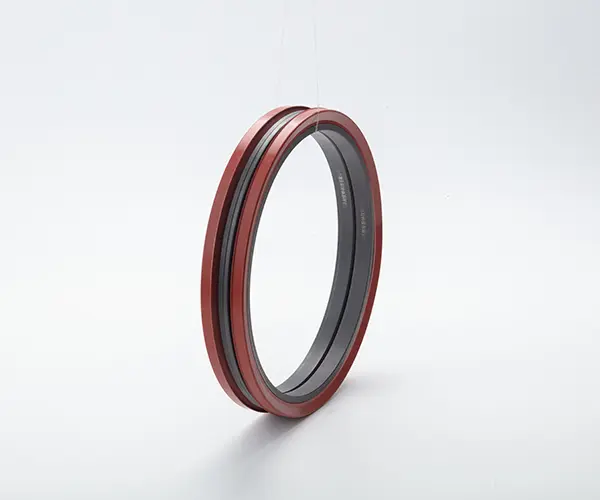
Floating seals, like all mechanical components, eventually wear out and fail. When a floating seal fails, it can cause significant damage. The primary signs of failure include:
Leakage: The most obvious sign of seal failure is leakage, particularly around the sprocket or gear areas.
Contaminant Ingress: If the seal no longer functions properly, contaminants like dirt, sand, or debris can enter the system, causing damage to critical components like bearings and gears.
Aging: Over time, seals degrade due to exposure to harsh operating conditions, such as high temperatures, extreme pressures, and abrasive particles.
Contaminant Buildup: If debris accumulates on or around the seal, it can shift or damage the O-ring, leading to a loss of sealing pressure and premature wear.
Floating seals are essential components in protecting machinery from harsh environments, ensuring that equipment operates efficiently and with minimal downtime. These seals are particularly important in high-stress applications like construction machinery, mining equipment, and industrial systems, where preventing leakage and protecting against contaminants is critical. By understanding the structure, function, and maintenance requirements of floating seals, businesses can extend the life of their equipment, reduce maintenance costs, and ensure optimal performance in demanding conditions.

With over 30 years of specialized experience in designing and producing floating oil seals, Fuyote stands out as one of the most professional floating seal manufacturers in the industry. Boasting an 8000-square-meter manufacturing plant, Fuyote is equipped to handle large-scale production while maintaining exceptional quality. As a seasoned floating seal supplier, the company caters to both OEM and ODM needs. Fuyote also offers a broad range of products, including duo cone seals, heavy-duty seals, floating face seals, floating oil seals, and floating ring seals. If you are looking for high-quality, durable floating seals, don’t hesitate to make an inquiry today! Contact Fuyote for tailored solutions and expert advice, and let us help you find the perfect seal for your application.